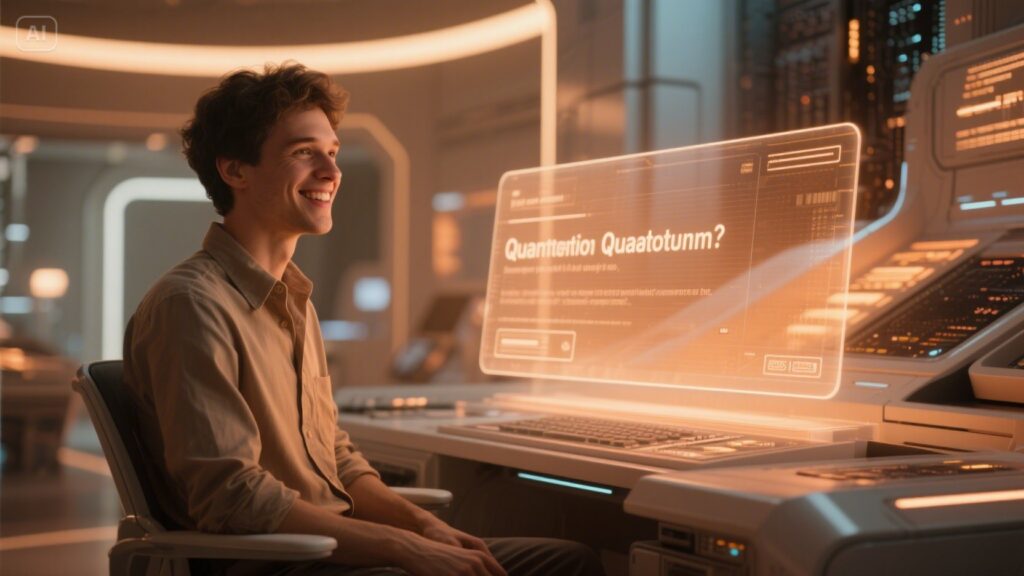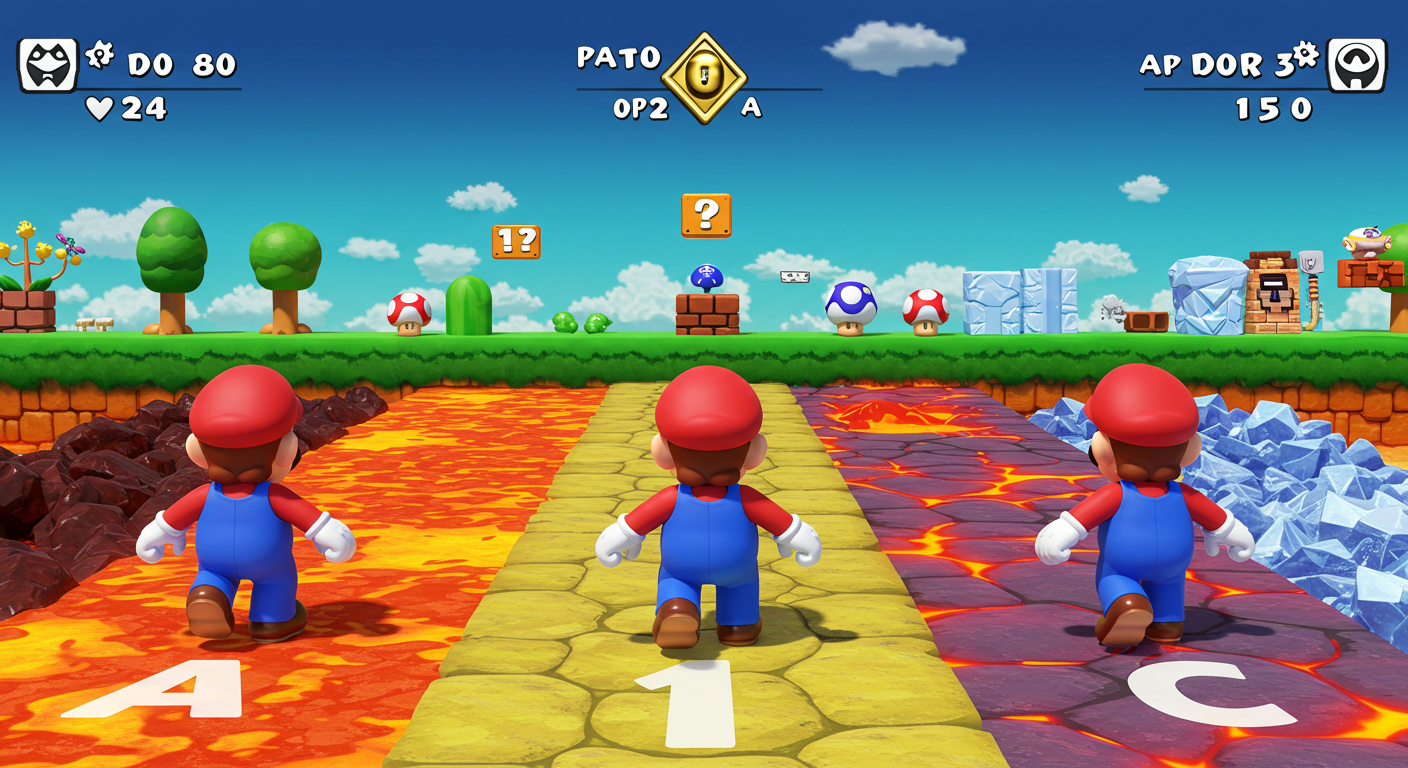Super Mario Traveling Through Multiple Worlds at Once
Imagine this.
Super Mario is walking through a game and comes to a fork in the road.
A traditional computer would choose either path A or B and proceed.
But what about a quantum computer?
Mario runs down all the paths—A, B, even C—at the same time.
Surprisingly, this isn’t just a game metaphor—
it’s an analogy for the key concept behind quantum computing: superposition.
We’ve lived in a world of binary—0 or 1.
But the basic unit of quantum computing, the qubit, can be 0 and 1 at the same time.
This simultaneous nature unlocks a level of computation we’ve never imagined before.
The Magic Coin Box – What Is a Qubit?
Traditional bits are like a coin showing either heads (1) or tails (0).
But a qubit is like a coin spinning in midair.
While the coin is spinning, it’s not heads or tails—it’s both.
Quantum computers use multiple of these spinning coins,
each capable of calculating countless possibilities simultaneously.
This is the ultimate form of what we call “parallel processing.”
Qubits + Entanglement = Computation Beyond Reality
What truly makes quantum computers powerful is not just superposition,
but also the concept of entanglement.
Here’s a simple way to understand it:
If one Mario jumps, another Mario in a different dimension jumps at the exact same time.
When two qubits are entangled,
they can share states even if they’re on opposite sides of the Earth.
This enables quantum computers to go beyond fast calculations
and solve previously impossible problems—like molecular simulations, advanced cryptography, and complex AI learning.
The Quantum Computer’s Maze-Solving Trick
Give a traditional computer a maze,
and it will try each path one by one.
But a quantum computer?
It “tries all paths at once and only keeps the correct one.”
This ability can drastically shorten complex and inefficient computations, such as:
– Drug combination experiments
– Climate modeling
– Massive financial risk analysis
It can process millions of possibilities simultaneously within these challenges.
Where Are We Now?
IBM, Google, Microsoft and others are racing to improve the stability and precision of qubits.
Though quantum computers are still in the early stages of commercialization,
real-world applications are expected to ramp up between 2029 and 2035.
And when that time comes, we may witness the “magic” we imagined become reality.

In Summary – Quantum Computers Are Not Magic
Quantum computers may sound magical,
but they’re actually based on the natural principles of quantum physics.
In fact, traditional computing might be considered artificial, while quantum computing could be more in tune with nature.
And once we understand this new form of computation,
we can begin to imagine an entirely different kind of future.
🔗 Quantum Computer Series, More Fun When Viewed in Order
- Detecting Illness Inside My Body in Just 1 Second? The World Built by Quantum Computers – Part 1
- How Do Quantum Computers Actually Work? The World Built by Quantum Computers – Part 2
- Is Your Password Really Safe? The World Built by Quantum Computers – Part 3
- What If Emotions Could Be Shared in Real Time? The World Built by Quantum Computers – Part 4
- Who Will Design the Future of Art, Materials, and Investment? The World Built by Quantum Computers – Part 5
